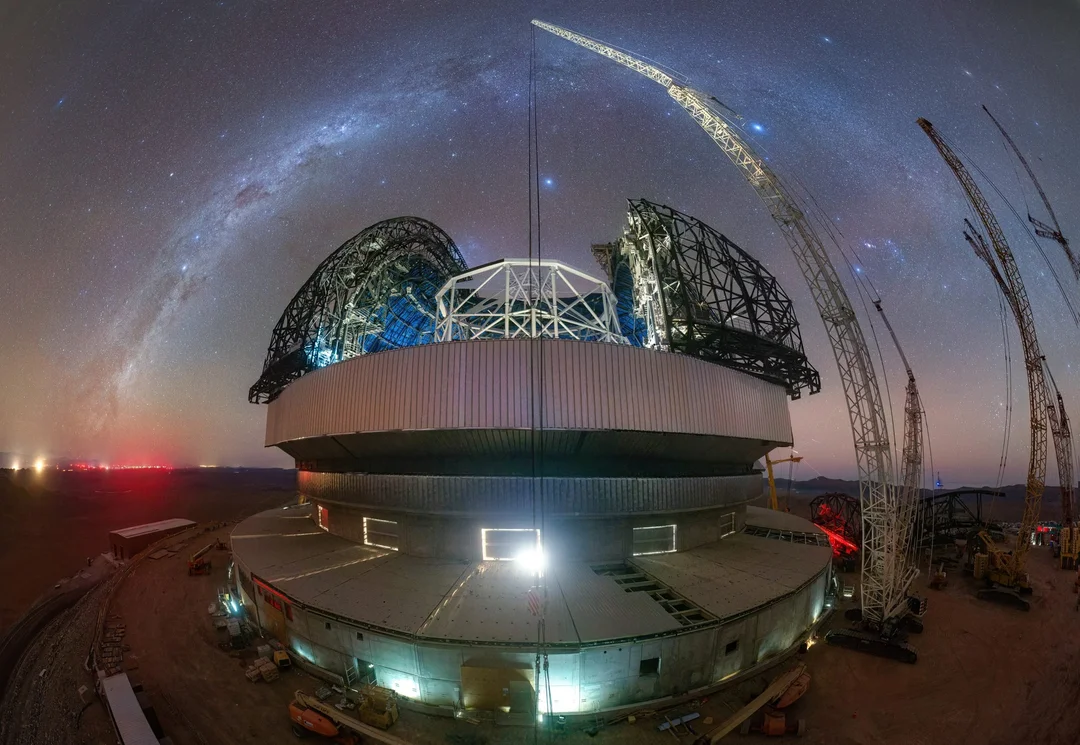
Revolutionizing Astronomy: How Lasers & Mammoth Telescopes are Unveiling the Universe’s Secrets
The world of astronomy is undergoing a dramatic transformation, thanks to cutting-edge technologies like adaptive optics and the construction of colossal telescopes. From the Atacama Desert in Chile, two groundbreaking projects are pushing the boundaries of what we can observe in the cosmos: the Very Large Telescope (VLT), enhanced with laser guide star technology, and the nearing-completion Extremely Large Telescope (ELT).

Combating Atmospheric Distortion with Artificial Stars
At the Paranal Observatory, the UT4 telescope of the VLT stands out not just for observing stars, but for creating them. By firing powerful lasers into the atmosphere, UT4 generates artificial "guide stars." These artificial stars excite sodium atoms approximately 90 kilometers above the ground, making them glow and providing a reference point. This allows the telescope to measure and correct for the atmospheric distortions that plague ground-based observations.
According to SciTechDaily, this adaptive optics system enables UT4 to capture images with sharpness rivaling those from space telescopes. The system adjusts the telescope’s secondary mirror in real-time, counteracting atmospheric turbulence and producing incredibly clear images.
The Future is Even Sharper
The capabilities of UT4 are only the beginning. The other three telescopes in the VLT array will receive their own lasers, further enhancing image sharpness. This upgrade will make the VLT Interferometer even more powerful, combining light from all four telescopes to create a massive "virtual" telescope.
The Extremely Large Telescope (ELT): A New Era of Ground-Based Astronomy
Not far from Paranal, the Extremely Large Telescope (ELT) is rapidly taking shape. This next-generation telescope will boast at least six lasers and the largest telescope mirror ever made. Its dome will rise to 80 meters—roughly the height of Big Ben without its spire. Climbing from the base to the top of the ELT takes about 30 minutes, emphasizing its monumental scale.
The ELT’s design involves an intricate system of mirrors. Light collected by the 39-meter primary mirror will reflect upward to a secondary mirror, then travel downward through the central tower, passing through three additional mirrors before reaching scientific instruments.
Why Does This Matter?
These advancements are transforming our ability to study the universe. By overcoming the limitations of atmospheric distortion, astronomers can achieve unprecedented clarity from ground-based observatories. The laser systems and adaptive optics of the VLT and the sheer scale of the ELT will provide astronomers with levels of detail previously only attainable in space.
These projects represent more than just technological marvels; they are gateways to new discoveries and a deeper understanding of our place in the cosmos. How will these advancements reshape our knowledge of the universe, and what unexpected discoveries lie ahead?
Share your thoughts and predictions in the comments below. Let's discuss the future of astronomical exploration!